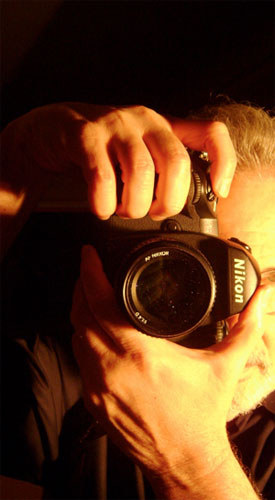Over more than 50 years, largely outside the mainstream, Robert Bergman has pursued a vision of advancing psychological and philosophical depth in photography and of transcending the boundaries between painting and photography. In Toni Morrison's words in her introduction to his classic 1998 book A Kind of Rapture, his color portraits are "... a master template of the singularity, the community, and the unextinguishable sacredness of the human race."
In his Epilogue to that book, the pre-eminent art historian, Professor Meyer Schapiro, wrote, "... his recent color portraits ... have no forerunners in photography. ... he has introduced the processes of unification, as in painting, with the search for harmony, movement, variety and distinction within it, beyond what I have ever seen in a photograph.... His finest works bring to mind some of the greatest painted portraits. ... truly profound works of art."
Placing Bergman in the context of other, better known master American photographers, John Yau, poet, critic, and author of The United States of Jasper Johns, has said, "Diane Arbus, Robert Frank, Garry Winogrand, and William Eggleston. ...he is certainly in their league. ... One day Bergman will get credit for the richness of his photographs, the way they transcend image."
Robert Bergman is currently producing a limited edition KEY SET of new master prints of 150-200 photographs that, together with the 51 A Kind of Rapture prints, will reveal the organic unity, the arc, of his creative journey: black & white street work of people and cityscapes; black & white portraits in nursing homes; black & white abstracts; hundreds of color portraits on the streets of American cities; and most recently, large-scale color abstracts.
Bergman has had solo exhibitions at The National Gallery of Art in Washington, DC, MoMA/P.S.1 in New York, Minneapolis Institute of Arts, Yossi Milo Gallery in New York, and Michael Hoppen Contemporary in London. Group shows include the Amon Carter Museum of American Art, MoMA, the Ackland Art Museum in Chapel Hill, North Carolina, and the "Come Together: Surviving Sandy" exhibition in Brooklyn, NY.
In addition to the collections of the Hill Art Foundation and Agnes Gund, President Emerita, MoMA, and numerous other individual's collections, Robert Bergman's work is in the permanent collections of the Amon Carter Museum of American Art, which recently acquired a vintage set of the 51 A Kind of Rapture color portraits, the Cleveland Museum, the Houston Museum of Fine Arts, the Minneapolis Institute of Arts, The National Gallery of Art, the 21C Museum in Louisville, KY. His work has also been highlighted in books, magazines, and newspapers in the United States, Great Britain, France, and Germany as well as on National Public Radio and the Public Broadcasting System. He received the Pollock-Krasner Foundation Grant in 2017.
Selected Books on

